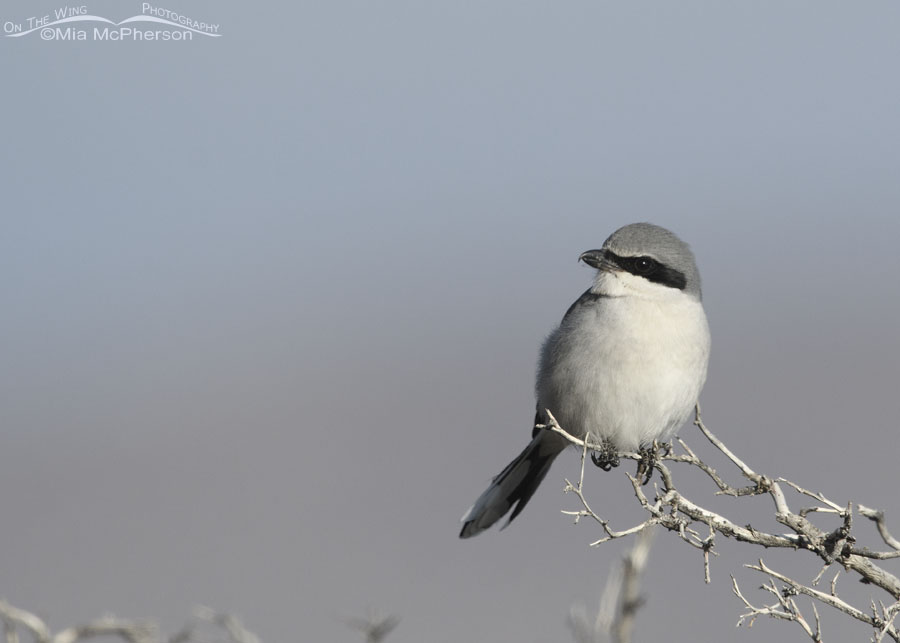Due to extended gray, cloudy weather and not getting out into the field I dug into my archives and today I am sharing a photo of a winter Loggerhead Shrike. I took this photo almost a year ago on a bright, cold morning when there was actual sunshine.
 Loggerhead Shrike in winter – Nikon D500, f7.1, 1/2500, ISO 500, Nikkor 500mm VR with 1.4x TC, natural light
Loggerhead Shrike in winter – Nikon D500, f7.1, 1/2500, ISO 500, Nikkor 500mm VR with 1.4x TC, natural light
Last winter I repeatedly saw a single Loggerhead Shrike in the desert habitat where I photographed this shrike up in Box Elder County. I believe it was always the same bird. This species can be quite territorial. We are in danger of losing this species.
A Species In Decline: Loggerhead Shrikes
I am concerned that I am seeing fewer Loggerhead Shrikes now than I used to compared to when I first moved to Utah. This species is in steep decline. Between 1966 and 2015, the species declined by almost 3% per year, resulting in a cumulative decline of 76%, according to the North American Breeding Bird Survey.
Northern Utah is rapidly losing excellent habitat that this species uses along the Wasatch Front and desert areas to the west. If another proposed inland port is built in Northpoint near the Salt Lake City Airport this species will lose out on great habitat there too along with many other birds and other wildlife.
When state lawmakers and greedy businesses place industry growth over people, wildlife, and the environment, it is ultimately a disaster in the making. The lawmakers of the state of Utah have done this repeatedly. Unchecked growth will cause loss of habitat, more pollution, and more of a burden on our already limited freshwater supplies.
Most of our current lawmakers don’t seem to care about our water crisis, the Great Salt Lake, or protecting our environment. They appear to only focus on short term financial gains and not about the long term impacts on Utahns, the environment, and wildlife.
Enough. It is time for a change.
Mia
Click here to see more of my Loggerhead Shrike photos plus facts and information about this species.


Great pic of a beautiful bird but a true, and sad, commentary on political priorities. Thanks Mia.
Snapped a photo of one this morning at Gunlock State Park (January 18, 2023).
Beautiful bird 💚
If the Great Salt Lake dries up, birds and other wildlife will lose their habitat.
But people will get a new habitat: swirling dust particles of salts, sand, and heavy metals.
Sadly the same is true here. Of far too many birds and other animals. For similar reasons. I am ashamed of our species, sad, angry and despairing.
The Loggerhead is such a beautiful little bird. I wasn’t aware of their existence before this post.-Jeri
Lovely bird. It’s so, so sad. And maddening. Unfortunately, incremental change or formulaic rituals meant to simulate change (i.e.elections) have not and evidence strongly shows they will not bring about the changes the continued existence of life on this planet requires. Tipping points have already been breached and the collapse when it comes is likely to be sudden and brutal. After a lifetime of activism I’d cry but that wouldn’t help now either, so for the moment I’ll stop and simply enjoy what we have left while it’s here.